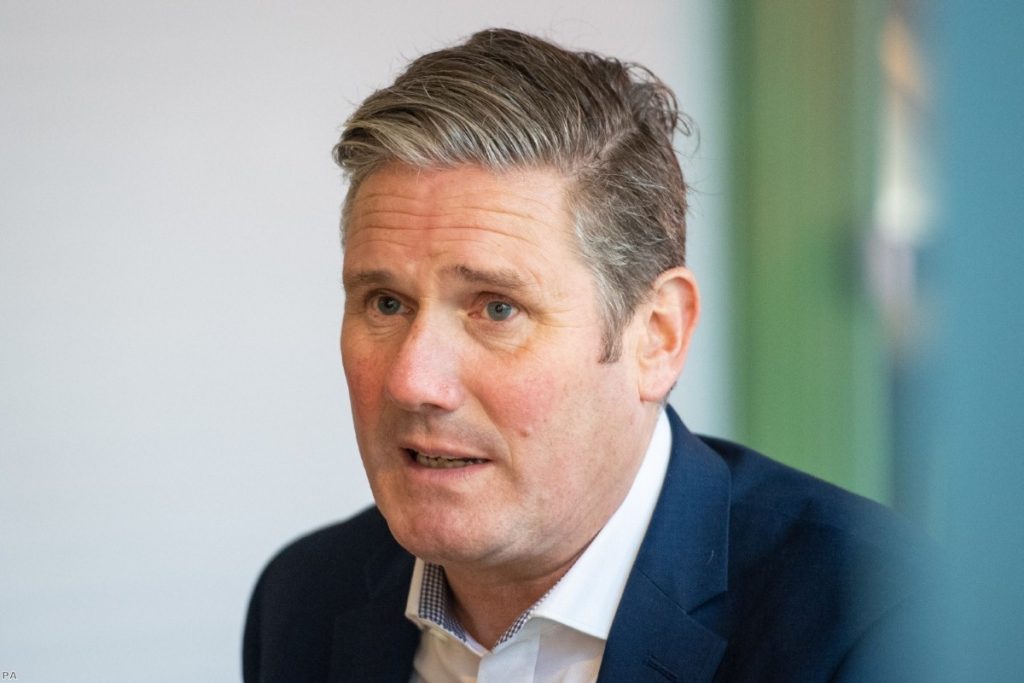Who is in the Shadow Cabinet?
The Shadow Cabinet was last reshuffled in late November 2021, as is made up of the following members of the Labour Party:
Leader of the Opposition – Keir Starmer
Deputy Leader, Shadow First Secretary of State, Shadow Chancellor of the Duchy of Lancaster and Shadow Secretary of State for the Future of Work – Angela Rayner
Shadow Chancellor of the Exchequer: Rachel Reeves
Shadow Home Secretary: Yvette Cooper
Shadow Foreign Secretary: David Lammy
Shadow Secretary of State for Business and Industrial Strategy: Jonathan Reynolds
Shadow Secretary of State of Climate Change and Net Zero: Ed Miliband
Shadow Secretary of State for Levelling Up, Housing, Communities & Local Government: Lisa Nandy
Shadow Secretary of State for Defence: John Healey
Shadow Secretary of State for Digital, Culture, Media and Sport: Lucy Powell
Shadow Secretary of State for Education: Bridget Phillipson
Shadow Secretary of State for Environment, Food and Rural Affairs: Jim McMahon
Shadow Secretary of State for Health and Social Care: Wes Streeting
Shadow Secretary of State for International Trade: Nick Thomas-Symonds
Shadow Minister of State at the Cabinet Office: Jenny Chapman
Shadow Secretary of State for Justice: Steve Reed
Shadow Secretary of State for Transport: Louise Haigh
Shadow Secretary of State for Women and Equalities, Party Chair and Chair of Labour Policy Review: Anneliese Dodds
Shadow Secretary of State for Work and Pensions: Jonathan Ashworth
Shadow Attorney General: Emily Thornberry
Shadow Cabinet Minister for Mental Health: Rosena Allin-Khan
Shadow Cabinet Minister for International Development: Preet Gill
Shadow Chief Secretary to the Treasury: Pat McFadden
Shadow Secretary of State for Wales: Jo Stevens
Shadow Secretary of State for Scotland: Ian Murray
Shadow Secretary of State for Northern Ireland: Peter Kyle
National Campaign Coordinator: Shabana Mahmood
Shadow Leader of the House of Commons: Thangam Debbonaire
Opposition Chief Whip: Alan Campbell
Shadow Leader of the House of Lords: Baroness Angela Smith
Opposition Chief Whip in the House: Lord Roy Kennedy
What is the Shadow Cabinet?
The Shadow Cabinet is made up of the senior members of the largest party not in government, known as Her Majesty’s Loyal Opposition.
The Shadow Cabinet largely mirrors the positions and responsibilities of the government’s actual Cabinet, holding it accountable, and presenting themselves as a viable alternative.
Each member of the Cabinet has an equivalent in the Shadow Cabinet. On behalf of the Opposition (the Labour Party), the relevant Shadow Cabinet Member scrutinises the work of the opposing Cabinet Minister. They offer criticism both in Parliament and on the media.
Members of the Shadow Cabinet also help develop policy on behalf of the Opposition, policy which is then ready to be implemented, should there be a change of government
Appointment to Shadow Cabinet
The Labour Shadow Cabinet was historically elected by Labour’s Parliamentary Party at the beginning of each Parliamentary session. This process was abolished in 2011.
Shadow Cabinet members have since been appointed by the Party Leader, the same process as utilized by the Conservative Party when they are in opposition.
Are Shadow Cabinet members paid?
Sir Keir Starmer, the Labour Leader, is the only member of the Shadow Cabinet to receive an additional salary on top of his salary as an MP.
In 2020 Keir Starmer earned £144,649 a year as Leader of the Opposition. That was comprised of Sir Keir’s basic salary of £79,468 for being an MP, and a further £65,181 for his work as Leader of the Opposition.

Keir Starmer earns £144,649 per year as Leader of the Opposition. That is some £20,000 less than the Prime Minister.
The Opposition Chief Whip in the House of Commons, the opposition Chief Whip in the House of Lords, and the Shadow Leader of the House of Lords are technically not members of the Shadow Cabinet. However they do often attend Shadow Cabinet meetings. These roles also receive an additional stipend, as does the opposition Deputy Chief Whip in the House of Commons.
Shadow Cabinet – Ministerial Experience
Five members of the current Shadow Cabinet have any previous Ministerial Experience: Ed Miliband, John Healey, Yvette Cooper, Pat McFadden, and David Lammy.
When a Party has been the Official Opposition for a long period of time this is not necessarily uncommon. Neither Tony Blair and Gordon Brown, nor David Cameron and George Osborne, had any previous government experience before first assuming office.
Shadow Spokespersons
Beneath the level of Starmer’s Shadow Cabinet, additional Labour MP’s fulfil the roles of Shadow Ministers.
Shadow Ministers are currently appointed by Sir Keir Starmer. They assist a particular Shadow Cabinet Minister in a junior capacity, shadowing the junior Ministers that operate in that same department.


